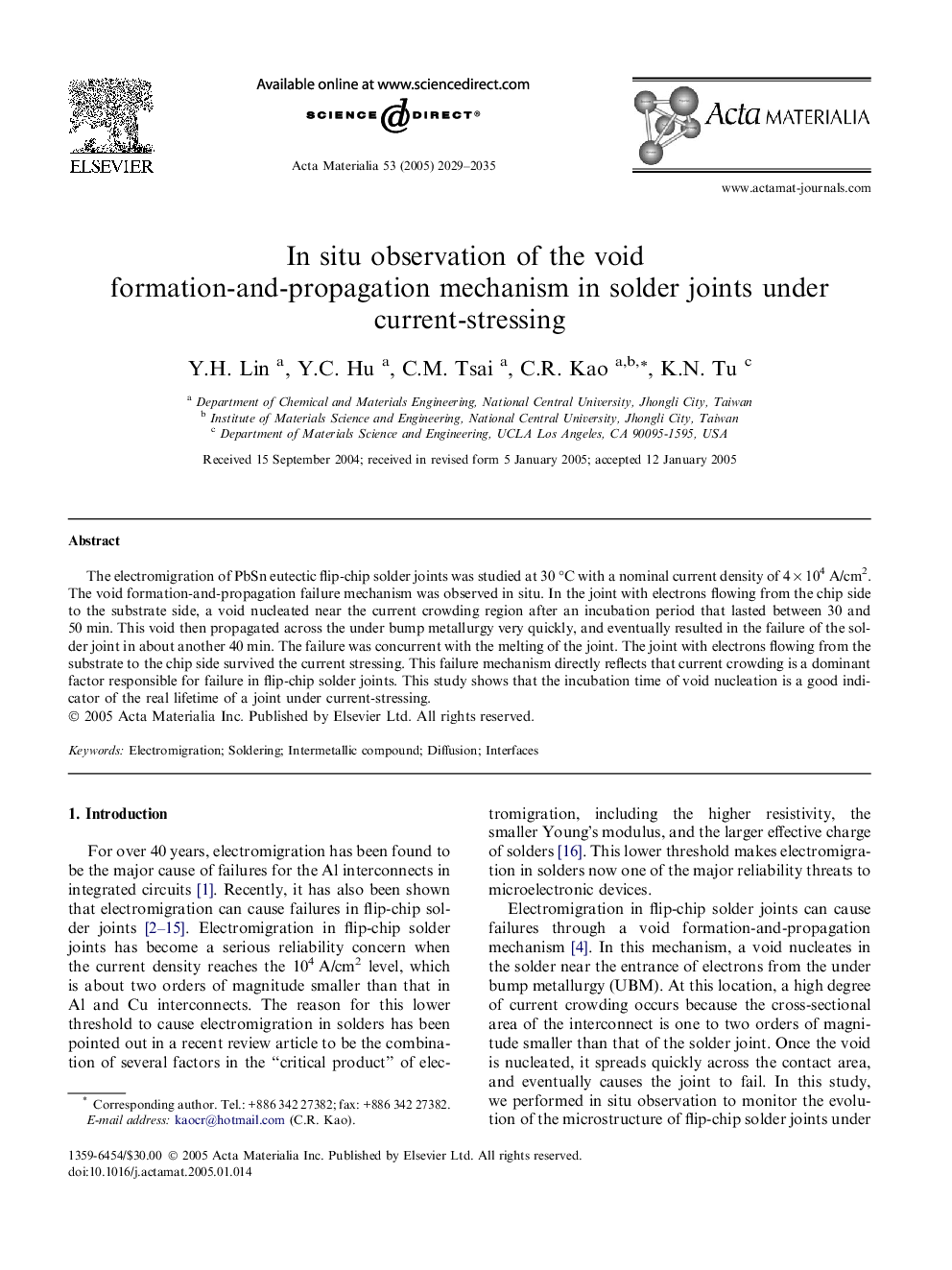| کد مقاله | کد نشریه | سال انتشار | مقاله انگلیسی | نسخه تمام متن |
|---|---|---|---|---|
| 1450910 | 988750 | 2005 | 7 صفحه PDF | دانلود رایگان |

The electromigration of PbSn eutectic flip-chip solder joints was studied at 30 °C with a nominal current density of 4 × 104 A/cm2. The void formation-and-propagation failure mechanism was observed in situ. In the joint with electrons flowing from the chip side to the substrate side, a void nucleated near the current crowding region after an incubation period that lasted between 30 and 50 min. This void then propagated across the under bump metallurgy very quickly, and eventually resulted in the failure of the solder joint in about another 40 min. The failure was concurrent with the melting of the joint. The joint with electrons flowing from the substrate to the chip side survived the current stressing. This failure mechanism directly reflects that current crowding is a dominant factor responsible for failure in flip-chip solder joints. This study shows that the incubation time of void nucleation is a good indicator of the real lifetime of a joint under current-stressing.
Journal: Acta Materialia - Volume 53, Issue 7, April 2005, Pages 2029–2035